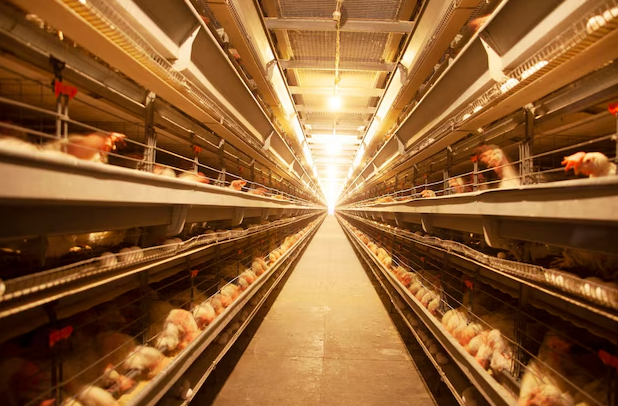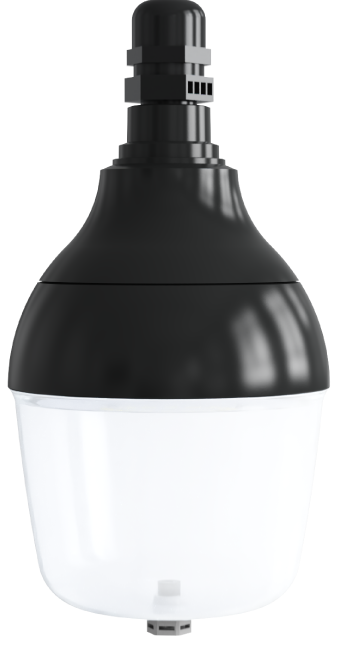What Kind of Light do Chickens Need to Lay Eggs?
What kind of light do chickens need to lay eggs?

Directory:
1. Light Spectrum
2. Photoperiod Management
3. Light Intensity
4. Light Source Technology
5. Breed-Specific Optimization
Optimal Lighting Conditions for Chicken Egg Production
To maximize egg production and quality, lighting management should consider the following evidence-based factors:
1. Light Spectrum
Red Light (600–700 nm):
Stimulates the hypothalamus, promoting early sexual maturity (by 1–2 weeks) and increasing egg production by 5–10% compared to blue or white light. However, excessive red light may elevate aggression in flocks.
Example: Hy-Line Brown hens under red light laid 3–5% more eggs than those under white light.
Green Light (500–570 nm):
Enhances eggshell quality by increasing thickness (8–12%) and strength in mid-laying phases. May reduce stress behaviors like feather pecking.
Blue Light (450–500 nm):
Delays sexual maturity by 1–3 weeks and reduces laying rates but can increase egg weight (2–4%) in late-laying phases. Suitable for managing growth in pullets.
White Light (Full Spectrum):
Modern LED white light (correlated color temperature 4000–5000K) matches incandescent efficacy, producing larger eggs (1–2 g/egg) in some breeds. Avoid cool-toned LEDs (>6500K), which may stress hens.
2. Photoperiod Management
Key Phases:
Pullets (0–18 weeks): Maintain 8–10 hours of light to prevent premature laying.
Laying Phase (18+ weeks): Gradually increase to 14–16 hours/day. Sudden changes >1 hour/week can disrupt production.
Intermittent Lighting:
Programs like 2L:4D cycles (repeating) reduce feed use by 6–8% without lowering egg yield. Ensure total light ≥14 hours/day.
Seasonal Adjustment:
In winter, supplement natural light with artificial morning/evening lighting. A 16-hour photoperiod can boost winter production by 4–6% (e.g., from 75% to 80% laying rate).
3. Light Intensity
Pullets: 5–10 lux (dim light to prevent early maturation).
Laying Hens: 15–30 lux (e.g., 20 lux at feeder height). Avoid >30 lux to prevent stress and cannibalism.
Uniformity: Maintain even distribution (max:min ratio ≤ 1.5:1) to prevent dark zones where hens may stop laying.
4. Light Source Technology
LEDs:
Energy-efficient (60% less power than incandescent). Red (660 nm) and warm white (2700–3000K) LEDs are optimal. Ensure flicker-free drivers (<5% flicker) to avoid hen agitation.
UV Supplementation:
UVB (280–315 nm) at 30–40 μW/cm² for 4–6 hours/day enhances vitamin D₃ synthesis, improving shell strength (10–15% reduction in cracked eggs). Critical for windowless houses.
5. Breed-Specific Optimization
Brown Egg Layers (e.g., Rhode Island Reds):
Best under red light (660 nm), increasing production by 5–8% versus white light.
White Egg Layers (e.g., Leghorns):
Prefer warm white light (3000K), yielding 2–3% more large-sized eggs.
Dual-Purpose Breeds (e.g., Sussex):
Green light (530 nm) balances egg output (3–5% improvement) and muscle development.
Practical Implementation
Commercial Systems:
Use programmable red/warm-white LEDs (14–16 hr/day, 20 lux). Add UVB lamps above feeding areas. Example schedule:
4:00–20:00 (16 hr) with 30-min dawn/dusk dimming.
Free-Range Systems:
Supplement natural light with 1–2 hr red LED at dawn (04:00–05:00) to synchronize laying cycles.
Monitor Behavior:
Aggression or floor eggs signal improper lighting. Adjust spectrum/intensity if >5% of hens show stress.
Common Errors to Avoid
Abruptly increasing photoperiod by >1 hour/week.
Using cool-white LEDs (>5000K) in laying houses.
Ignoring UVB in fully enclosed systems, leading to 10–20% more shell defects.
6. Related Product

_thumb.jpg)